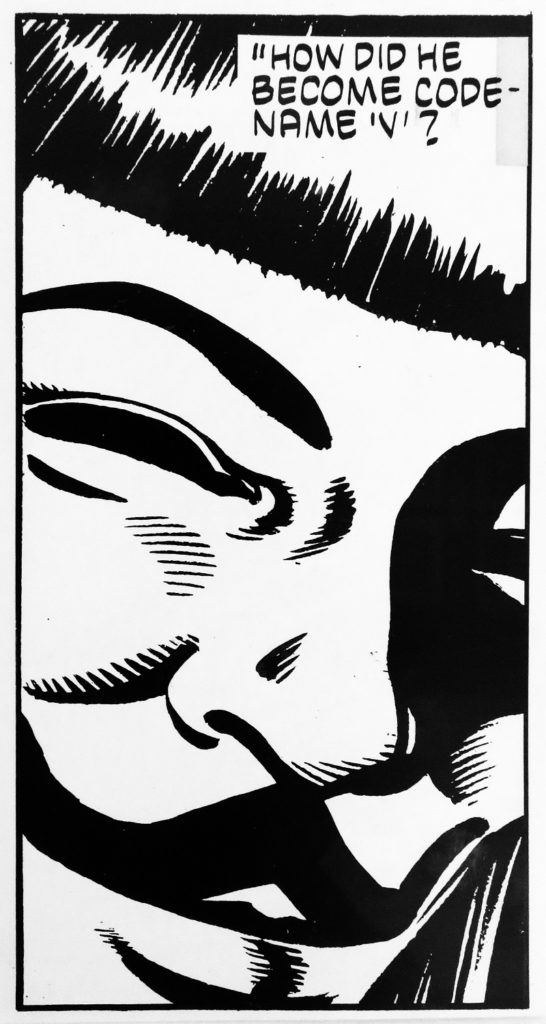
V for Vendetta: Behind the Mask – at The Cartoon Musuem, 18 May – 31 October 2021
By James Bacon: The Cartoon Museum re-opens with an exhibition examining the cultural impact of V for Vendetta, from seminal graphic novel to hit film.
If you are a V for Vendetta fan, prepare to be overwhelmed! A compelling exhibition of art from one of the greatest comic stories told is beautifully presented.
It is such a pleasure to walk into a dedicated exhibition space and see a hard focus on a single story, V for Vendetta, a fight against corruption, Christian fundamentalism, nationalism and fascism.
The Cartoon Museum team have done a fabulous job in gathering together a stunning selection of art. It also feels so absolutely perfectly timed, needed even, to reaffirm appreciation of art, to remember how wonderful it is to see an exhibition, to enjoy and consider the illustrative skill up close in its raw format and of course to reflect on the dangers of fascism, the importance of individuality and the vital piece protest plays in decent society.
V for Vendetta is densely meaningful, for me it is the journey of Evey, who is in many ways mentored by V, although there is a considerable amount open to interpretation and the story works to not explicitly spell out things for the reader, allowing one to take what messages and thoughts one finds. Written in 1981 and published first in British comics anthology magazine Warrior from 1982, the story was completed later for DC Comics in 1989 and adapted into film in 2005, starting Natalie Portman and Hugo Weaving.
V for Vendetta can be seen as a direct statement about where Thatcherism could have gone, but it feels fresh, with the overreach of police and state, various forms of nationalism, political cronyism and corruption, state-sponsored terrorism, clerical abuse, and police brutality so relevant at the moment, the reader is still presented with a frightening potential, sometimes feeling all too close. Some fights have moved on, yet marginalisation, institutional racism, police barbarity and discrimination are alive and well in Britain and elsewhere and the museum have worked with current non-violent protesters to include a selection of placards representing some of the issues of today. The level of prescience from Moore and Lloyd is unbelievable and the story they started forty years ago is still so pertinent and thought-provoking.
The rebelliousness of V has found a life of its own, with the use of the Guy Fawkes mask becoming prevalent since the film, its use on the internet and adoption by protesters around the world, the Anonymous protests in 2008 against the Church of Scientology seeing major use of them, the Occupy movement and then many other anti-establishment organisations and movements wearing them in many protests from Thailand to Hong Kong, seeing them banned in Saudi Arabia, whilst continuing to earn revenue for Time Warner, ironically.
The Cartoon Museum has a lovely basement space on Wells Street in central London and alongside the extensive permanent exhibition there is a dedicated and distinct room. They are acutely conscious of what they are doing and say ‘The exhibition launches at a time when, perhaps inspired by the fears and anxieties of the time in the UK, audiences may see V for Vendetta in a new light, following a pandemic year that recharged debates over rights, Government control, and citizenship.’
As one walks in there is a stark introduction on the wall, next to a selection of costume drawings from the film. In a glass case, there is the only non V for Vendetta item on display, the pages of Nightraven open from The Hulk comic, next to issues of Warrior. Then the beautiful watercolour covers from issue #2 and #9 of the DC series, with photographs and the mask from the film, bookended with a Norsefire banner flag, its bold colours seeming somewhat out of place, a vivid contrast to the black and white and gentle colours throughout, but entirely appropriate.
The film has some representation here, there are two storyboard pages, a number of costume drawings. David Lloyd has said of the Wachowski sisters that ‘I am glad it was in their hands’ and on the film, ‘I think it’s a great piece of cinema and I always describe it as another version of V, just like many version of great books, they often have less than the book but are a great version of it.’ It is lovely to see such a key prop, the most important one perhaps, but the exhibit has a hard focus on the art of the comic and with thirty-nine original pieces of comic art.
One turns and a wall of masks looks back, a stencilled CCTV camera overlooking, and one is minded of the transcendence this comic book idea, described by Alan Moore as ‘David Lloyd’s idea, and it was a brilliant idea to actually make him look like Guy Fawkes…’ as soon as I saw it, I saw this was genius, it was connecting to this whole British mythology, there was something so British and so striking about that iconic image and it played well in to that kind of thinking that was already starting to develop of the strip, which has gone on to represent so much and to so many, known purely for protest.
Broken into a series of different selections focusing on different areas from the villain to victims to the vision, to the voice, the museum have done a phenomenal job at giving both the newcomer to V, and its long-in-the-tooth lovers, something to enjoy and grasp and take in.
Next to some of the brilliant black and white bridging pages from Warrior, including one showing Falconberg Court, we see a digital selection of photos by Andrew Moore showing Tory celebration and civil unrest in the streets in the early ‘80s.
Another CCTV camera on the wall is foreshadowed by a real CCTV eye in the ceiling. The comic was originally presented in black and white, but it was coloured for the DC reprinting and finishing. We are then presented with three pages of digital print on acetate over a blueline base of watercolour on paper. It’s amazing to see how the colouring worked, how it was done and then how the black acetate made it so crisp, and one can see the layering. Then we have the first of many of the black and white ink and brush original pages, and the detail is fantastic to see. The creases in jackets, the fine line work, and the blue lines for the lettering. A real boon here is that the lettering is part of the artwork, allowing one to read the comic pages.
The first pages of the comic allow one to recall where it all started, these are colour originals, and then one is presented with barbed wire stencilled over a series of original pages that detail the activities in Larkhill resettlement camp, a concentration camp from the story, another stencilled camera next to the fence wire, drawing the eye upward, contemplating what it must be for many to be in a ‘camp’ of some sort right now, a harrowing and inhumane existence.
The cover from the graphic novel, the collection of the comics, is a very strong and bold watercolour which is great to see up close, the mask unmistakably contrasting with a nearby black ink and brushwork of roses with a collage of photocopied placards, the back cover from Warrior hinting at the story, a much more subtle image, complemented by the museum stencilling roses onto the wall. V considers the grey areas, the complex, and presents it in contrast, a very black and white visually pleasing presentation for the reader to figure out, that the ambiguity and greyness is a theme of the whole comic matched by the two-tone illustrative brilliance of Lloyd’s artwork, makes it stand out.
The original pages, colour originals, another cover, and some further costume work, continue, with key pages, Evey looking on at the end and then her own smile, following her own path, her own destiny and then there were four protest placards produced in collaboration with non-violent protestors who are then quoted on what it means to them to protest.
There is so much to ask, so much to take in. The pages are not displayed in a linear form, but there is considerable thought gone into how they are displayed, as the observer is shown sufficient, and arguably the most important pages from the comic, and presented with an overview of the ideas and concepts of the story without the details, without spoon feeding. It was very easy to spend two or three minutes taking in each piece of art, and so two hours went by incredibly quickly.
I did wonder whether we would see more of David Lloyd’s artwork from different stories, J for Jenny being one of my favourites, but also Hellblazer, Nighraven, Espers, or Kickback, but I think the detailed and consistent look at V for Vendetta was a wise decision, avoiding dilution. Many of the pieces are loaned by Lloyd himself, which did not surprise me, he is a kind and generous gentleman, very happy over the years to give his time at conventions, and has worked incredibly hard on the successful Aces Weekly, a digital anthology comic that he fronts and promotes, now celebrating its 50th issue. https://www.acesweekly.co.uk/
Joe Sullivan, Director of The Cartoon Museum, was on hand and along with Holly and Emma was very happy to engage and chat, and from their press release, Joe said ‘We’re delighted to re-open following the lockdown and to do so by inviting people to look behind the mask and explore how a British comic strip became a global phenomenon… V for Vendetta shows us a near-future world, that is borne out of fear and anger following a potential catastrophic event. That’s why it still speaks to us today and I look forward to welcoming the public back as we continue to celebrate the art, culture, and comics that try and make sense of the world we live in.’
A further exhibition was brought to my attention, a focus on Natasha Natarajan, a British Indian cartoonist and visual artist. She is the creator of FML Comics, wonderful productions. Born in 1991, and working and living in London, she uses art, including comics, zines, music, and animation, to communicate her most intimate personal and political experiences. She believes that it is through sharing our inner dialogues and conflicts that we can feel less alone and more fully enjoy the human experience. For some reason this felt like the perfect complement, and a really nice riposte to consider. Natasha can be found online at www.chikaboo-designs.com and the museum had a wonderful selection of her work and influences on sale, rounding off a wonderful visit.
Booking is not necessary, but a series of Covid secure arrangements are in place, a one-way system, spacing, hand sanitizer, a requirement to wear masks, and a limit on how many people are allowed in at a time. Tickets range in price, with adult admission £8.50.
The Cartoon Museum can be found at 63 Wells Street, Fitzrovia, London, W1A 3AE. Telephone: 020 7580 8155
- www.cartoonmuseum.org
- Twitter @Cartoonmuseumuk
- Facebook The Cartoon Museum
- Instagram @thecartoonmuseum
- YouTube The Cartoon Museum
Discover more from File 770
Subscribe to get the latest posts to your email.

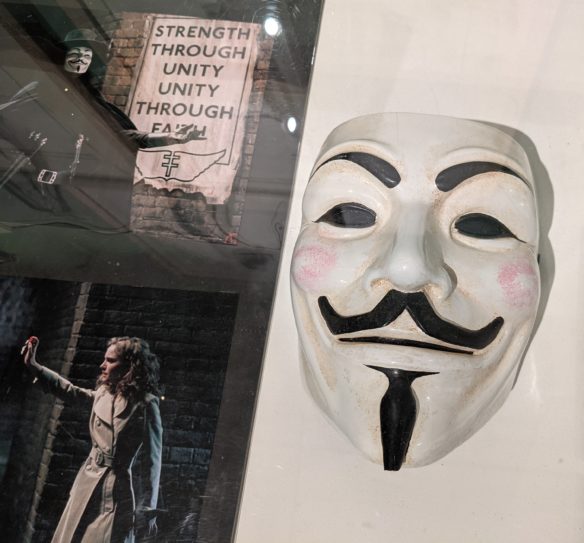

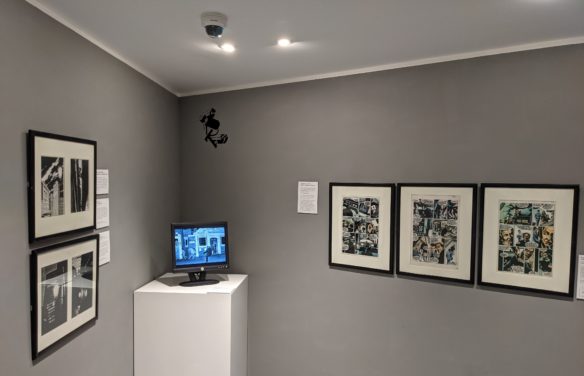
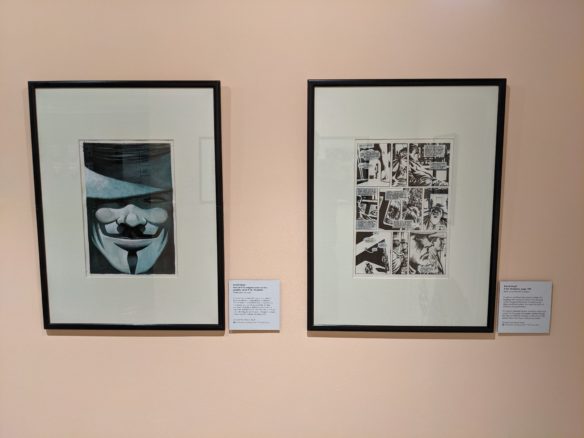
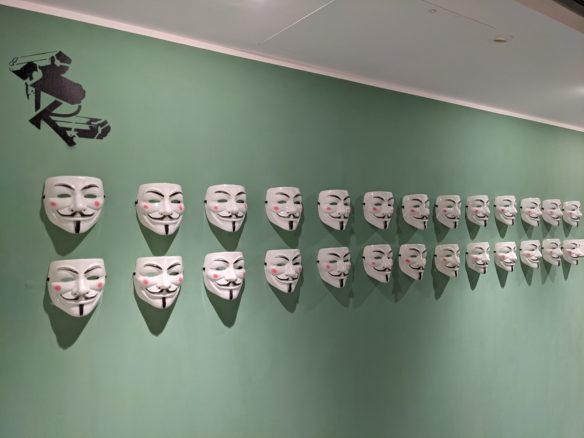

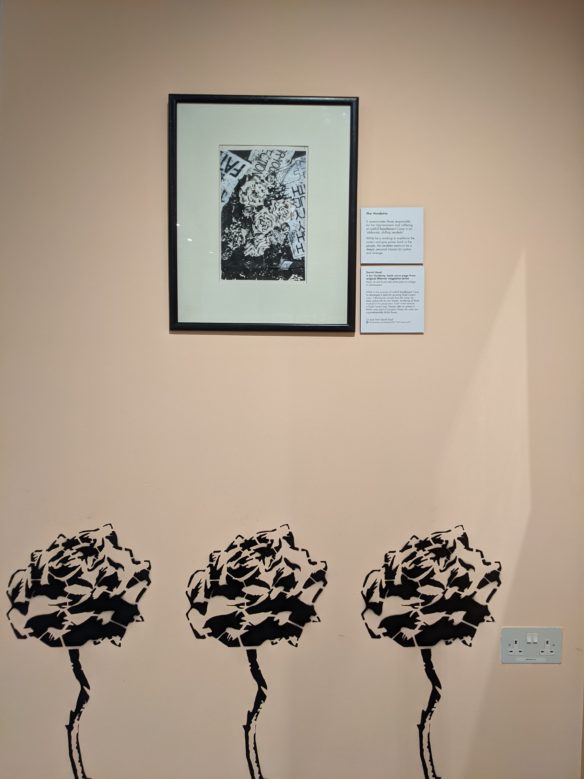
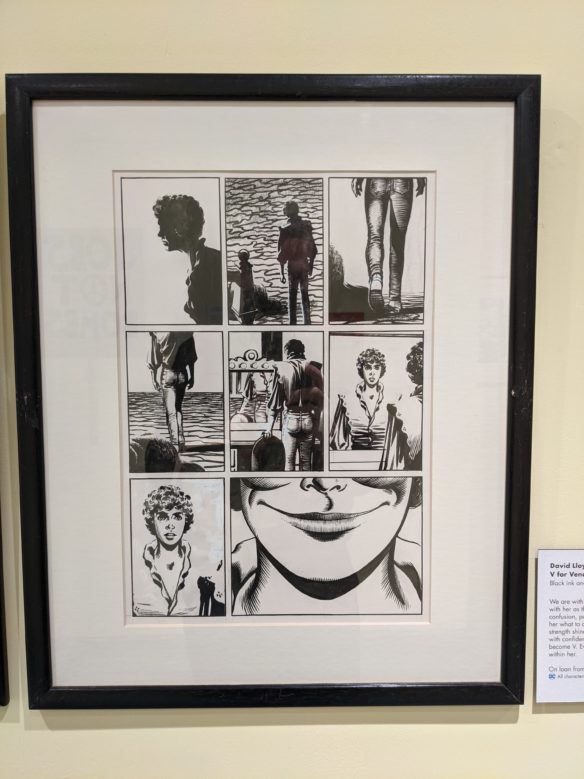
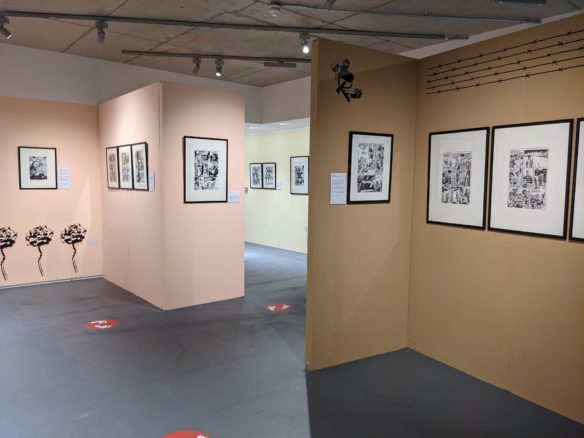
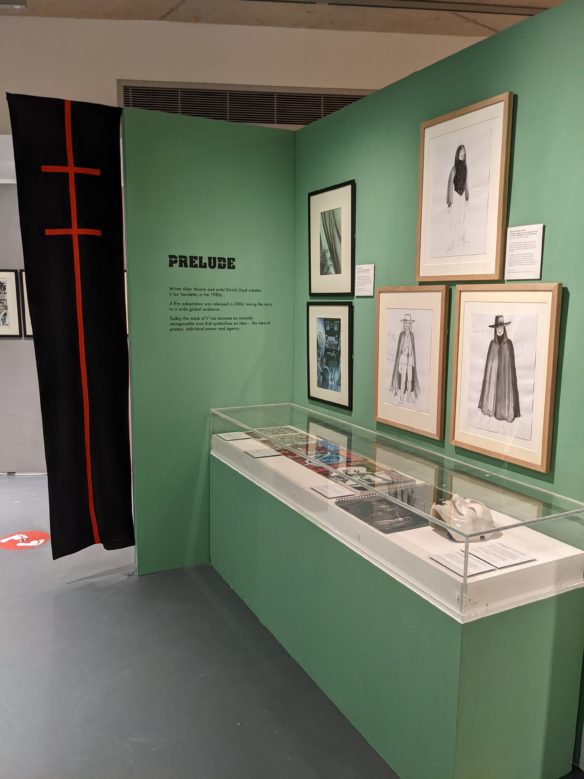
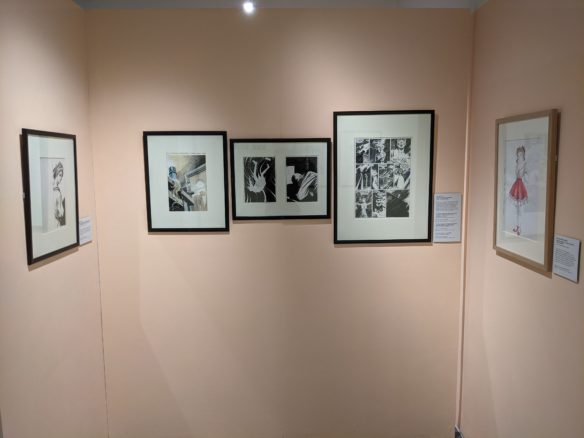
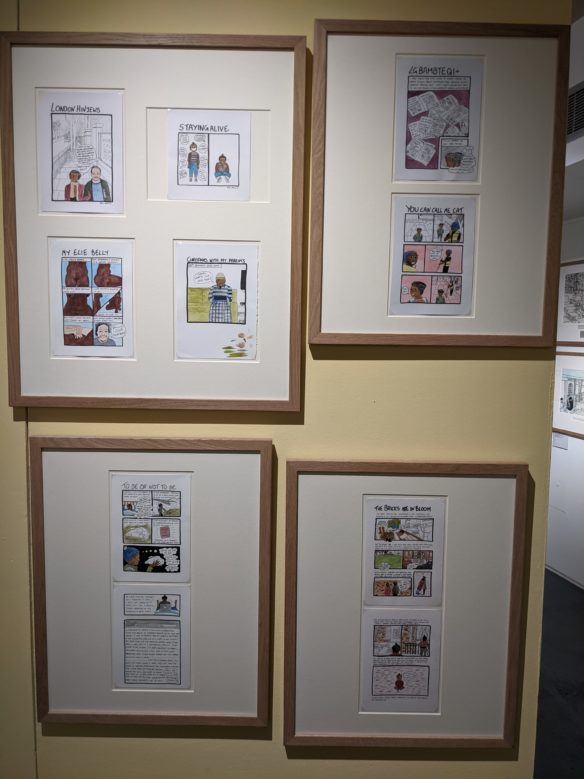
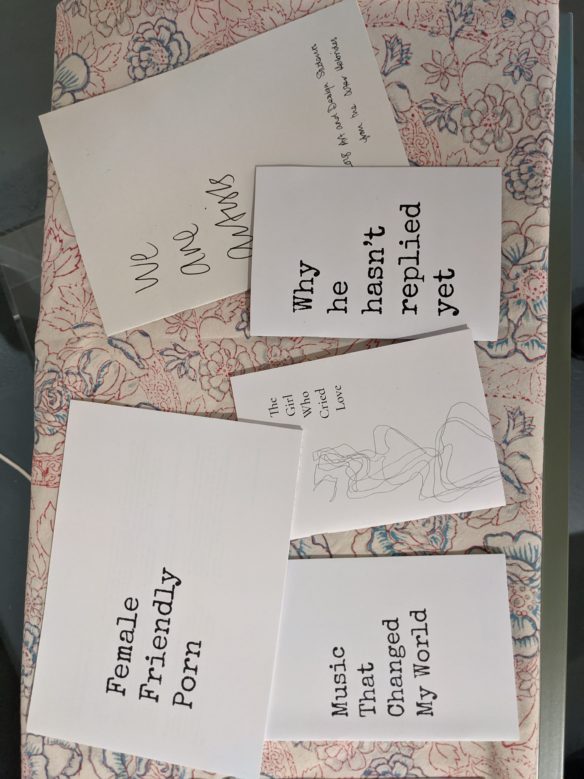
Ironically, James Bacon is a supporter of a Worldcon in Israel in 2027. An Apartheid Convention in the same spirit as placing a convention in Sun City during the apartheid era of South Africa.
An exhibition of V for Vendetta would fit right in in a country now showing the worst of racism, fascism and state-sponsored terrorism.
I think a lot of that critique is happening in your own head and not in James’ behavior.
Consider the discussion that went on through all the years of the Trump Administration. I found it entirely possible to want a Worldcon in San Jose without adopting any of Trump’s racism and misogyny or confusing what Trump stands for with what the San Jose committee stood for.
I understand that you oppose having a Worldcon in the country of Israel based on your view of actions by its government. I don’t think you’re right to claim there’s an endorsement of those actions because someone from another country who would like to see a Worldcon there.
What is happening in Israel is far, far, far worse than what Trump did. We are talking apartheid. And you should do me the courtesy of not making prejudiced comments about what happens in my head.
It is not only my views of the country. It is the views of Human Rights Watch, of Amnesty, of the Red Cross, of UN and of Israels human rights organisation B’tselem.
And to place a convention in an apartheid country is to legitimise the apartheid. Just as it was seen as legitimising apartheid to play in Sun City during South Africas apartheid era.
Hampus Eckerman: When you violate my hospitality by crapping on a guest poster, you can hardly complain about “courtesy” in the next breath.
Pingback: Pixel Scroll 1/18/22 21 Jaunt Street | File 770